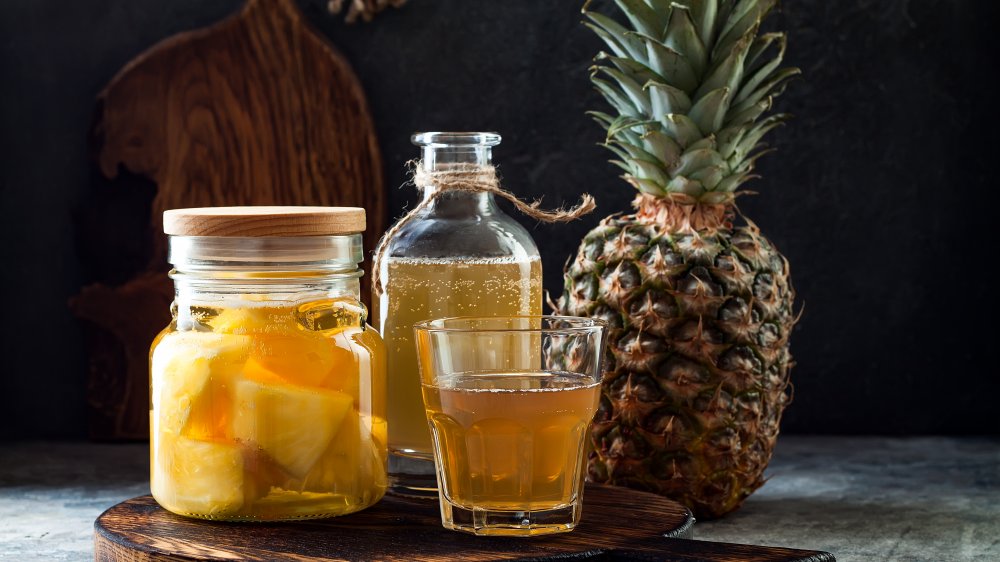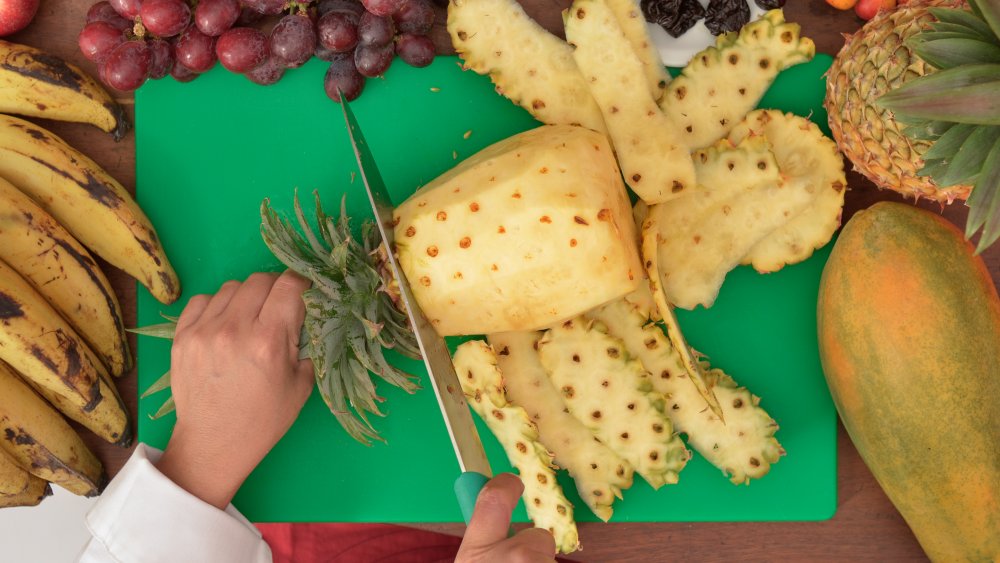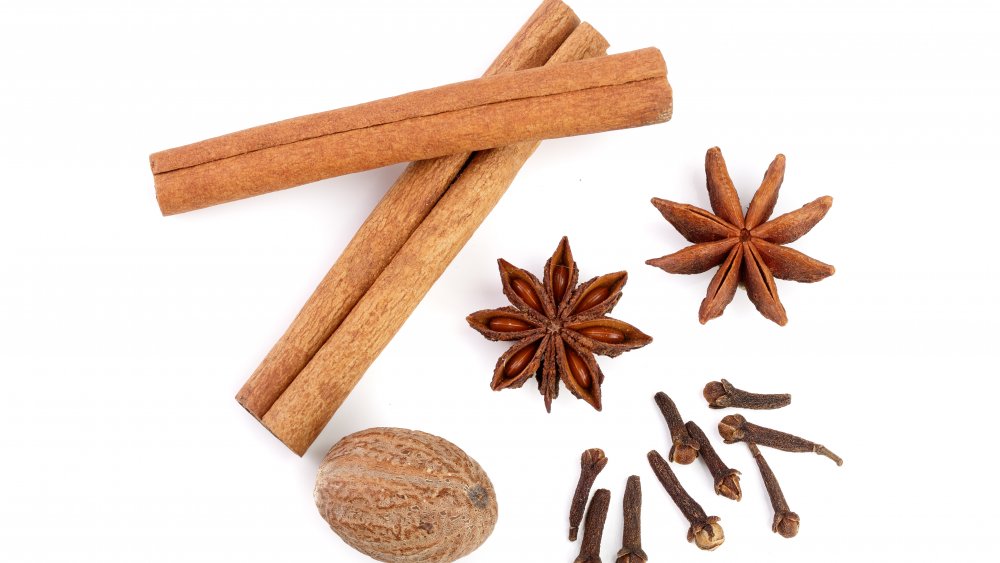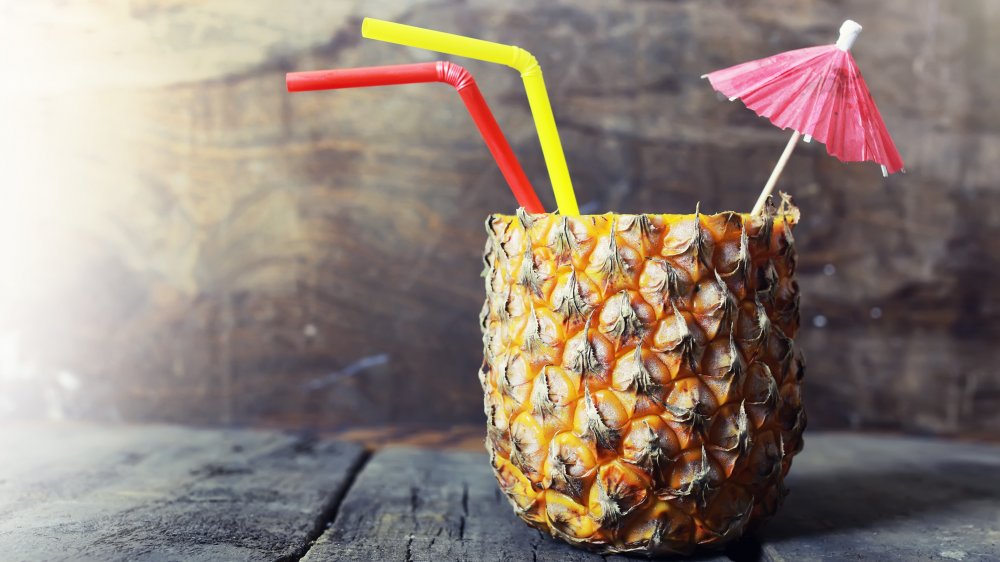The Mexican Summer Cocktail You Can Ferment At Home
The zero food waste movement is definitely having a moment, from viral video tips meant to help you revive mushy berries to recipes for dishes like banana bread that help you use up past-its-prime produce. There are even hacks that help you make the most of non-edible parts of food, such as egg shells and onion skins.
One notoriously hard to re-purpose item, however, has always been pineapple skin. Not only is it tough and hard, but it always seems to take half the pineapple with it no matter how efficiently you try to peel the fruit. If you've been avoiding fresh pineapple because it just makes you cry to see half the fruit go into the trash, you're absolutely going to love this recipe. Not only can you enjoy all the fresh pineapple your heart desires, but you can also put the rinds to good use making your own delicious fermented low-alcohol summertime treat. Tepache, a frugal Mexican favorite, is a drink that is as easy as it is thrifty to make.
How to make tepache
The Mexico in My Kitchen food blog describes tepache as being "like a light and sweet pineapple beer," and provides a recipe calling for just three basic ingredients: pineapple peels, water, and sugar. What tepache lacks in ingredients, it makes up for in the time it takes to prepare it, though, as it may require up to three days before it's ready. Watch out if you leave it too long, though, as if you let it ferment too long, you may wind up with a batch of pineapple vinegar on your hands. (Not that this is such a tragedy, as this can be yummy in marinades and pickled peppers.)
So, you want to peel your pineapple, then place the peels in a large glass pitcher with one cup of sugar. While the blog suggests cut-up pieces of piloncillo (a raw form of can sugar), whatever sugar you have on hand should also work — perhaps brown sugar might be more preferable to white, though, since it will add a slightly deeper note of flavor. Add two quarts of water to the pineapple and sugar. Cover the pitcher loosely with cheesecloth or plastic wrap, then let it sit out on a countertop for 24 hours. Remove the white foam that should have risen to the top, then let it sit for another 24 to 36 hours. Strain, chill, and enjoy as is or diluted with water.
Tasty additions to tepache
Although it's not absolutely necessary to make your tepache with anything other than pineapple rind, sugar, and water, Mexico in My Kitchen says you may wish to add a cinnamon stick and three cloves if you like those flavors along with your pineapple. A similar tepache recipe from Live Eat Learn also mentions those two ingredients, and offers two thumbs of sliced fresh ginger and/or half a red chili as alternate seasonings if you prefer those flavors.
Once your tepache is finished fermenting, The Spruce Eats proposes several additions to the drink that can not only enhance presentation (since half the fun of seasonal drinks is making them look all pretty and summery), but also help them taste even better. They suggest squeezing some fresh lime juice either into the pitcher or into each individual glass before serving and say you can also add chopped fruit, such as fresh pineapple or apple chunks to make a kind of tepache sangria.
How to booze up your tepache
While tepache is fermented and thus slightly alcoholic, it's actual alcohol by volume content is pretty low. (According to Live Eat Learn, its ABV is most likely around two percent.) If you prefer a boozier drink, you can, of course, feel free to spike your beverage with a shot of rum, vodka, tequila, or any other liquor of your choice. There is a way, however, to make your tepache boozier while it's still in the brewing process, and this involves the addition of some beer.
The Mexico in My Kitchen recipe doesn't call for beer, but they admit that many people do brew their tepache that way since it makes for not only a stronger drink, but also significantly speeds up the fermentation process. Beer, if used, should be added along with the water. For a recipe this size, you'd use 12 ounces of beer (one can/bottle, or a cup and a half of liquid). You could reduce the amount of water used by the same amount, but this step is apparently unnecessary.
Yet another way to up the alcohol content involves the addition of yeast — baker's yeast will work, but brewer's or champagne yeasts are better. Gone With the Wynns suggests adding half a teaspoon per batch of tepache. In addition to allowing for higher alcohol content, the addition of yeast also seems to slow the process of the drink's turning into vinegar since they say you can ferment it for up to five days.



